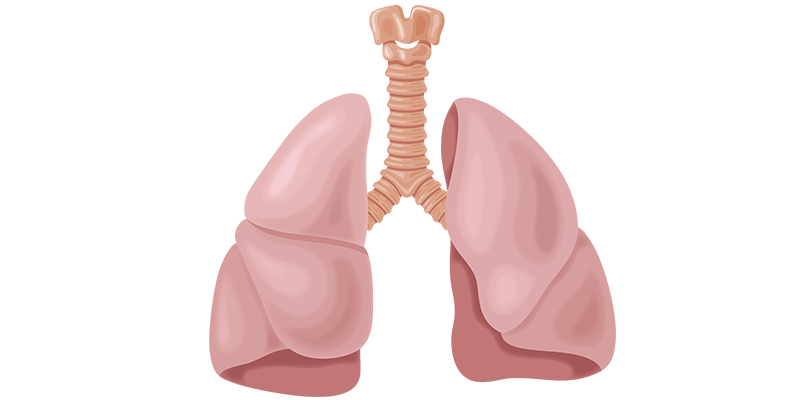Our Multidisciplinary Approach
Comprehensive care is essential throughout the cancer journey. Having a multidisciplinary team by your side when you’re diagnosed with lung, chest, or esophageal cancer is vital. Our medical and surgical specialists treat every type of these cancers, from the most common to the rarest.
You’ll receive detailed attention and a strong commitment from our staff as we educate you and your family about the specific type of cancer. We’ll make sure you have a complete understanding of our treatment plans so you can make informed decisions. Leading-edge treatments combine with a range of supportive services so you can focus on the most important thing: getting well.
Terms to Know
- Radiation oncologists - Doctors with special training in using radiation to treat cancer.
- Medical oncologists – Doctors with special training in diagnosing and treating cancer in adults using chemotherapy, hormonal therapy, biological therapy, and targeted therapy.
Lung and Chest Cancers We Treat
- Chest wall tumors. They are rare tumors that develop in the bones, soft tissues, and cartilage of the chest cavity (which contains the heart, lungs, and other vital organs). Sometimes they start in the chest wall and or they may spread from nearby thoracic tumors.
- Esophageal cancer. The esophagus is a hollow tube that connects the throat to the stomach. The cancer begins in the inner layer of the esophageal wall and grows outward. There are two main types of esophageal cancer, adenocarcinoma, and squamous cell carcinoma.
- Lung nodules. This is a small abnormal mass that is sometimes found during a CT scan of the chest, which may be done as part of a lung cancer screening, or to check the lungs because you’re having symptoms. Most of the nodules seen on CT scans are not cancerous and are usually scar tissue or something else benign.
- Mesothelioma. This cancer begins in the pleura, which is a thin, transparent, two-layered membrane covering and lining the inside of the chest wall and abdomen. Asbestos is the only known cause of mesothelioma in the U.S.
- Non-small cell lung cancer. This condition grows more slowly than small cell lung cancer. However, it can still spread to other parts of the body before it’s diagnosed. The most common types of this cancer are squamous cell carcinoma, adenocarcinoma, and large cell carcinoma.
- Small cell lung cancer. This is a very aggressive form of cancer that spreads quickly.
- Thymomas. The thymus is a small organ that lies in the upper chest above the heart and under the breastbone. Thymomas is a rare cancer that forms in the cells that cover the outside of the thymus. It usually forms between the lungs in the front part of the chest.

Diagnosing Lung and Chest Cancers
- Barium swallow. If you're having trouble swallowing, this may be the first diagnostic test you have. You will be asked to swallow a thick, chalky liquid called barium that coats the walls of the esophagus. When X-rays are taken, the barium outlines the esophagus and can show abnormal areas in the lining of the esophagus.
- Biopsy. This test removes a small amount of tissue to be examined under a microscope. If a suspected cancer is found on an endoscopy or imaging test, it is biopsied.
- Endoscopic procedures. These tests use a flexible lighted tube (endoscope) that has a video camera on the end that’s inserted through your nose into your throat and down the esophagus while you’re sedated. Tests that use endoscopes include upper endoscopy, bronchoscopy, thoracoscopy, and laparoscopy.
- Endoscopic ultrasound. For this test, there is a probe at the end of the endoscope that gives off sound waves. In this way, the probe can get very close to tumors in the esophagus to determine the size of esophageal cancer and how far it has grown into nearby areas.
- Imaging tests. Pictures are taken of the inside of your body to look for cancer, learn how far it has spread, and help see if treatment is working. Types of imaging tests include computed tomography (CT) scans, nuclear medicine scans (such as bone scans and thyroid scans), magnetic resonance image (MRI) scans, and positron emission tomography (PET).
- Tumor marker test. A sample of blood, urine, or tissue is checked to measure the amounts of certain substances made by organs, tissues, or tumor cells in the body.

Treating Lung and Chest Cancers
It can be overwhelming to know which treatments are right for you. That’s why we’re here. Our multidisciplinary team works together to tailor a plan for you. We make sure you’re involved in — and understand — every step of the plan. It’s cancer care that always puts you first.
Treatments may include:
- Ablation. This minimally invasive procedure treats solid cancers such as tumors. It uses CT scans, ultrasound, or magnetic resonance imaging (MRI) to guide and position a special needle probe into the tumor, where it “burns” or “freezes” cancers.
- Chemotherapy. This treatment uses a drug that stops or slows the growth of cancer cells. Not only is chemo used to treat cancer, but it can also help ease symptoms since it shrinks painful tumors. In many cases, chemotherapy is the only treatment used. It can also help other treatments work better, or it can be used after surgery to destroy any cells that may remain.
- Immunotherapy. Your immune system protects your body from illness and harmful foreign substances. Immunotherapy is just one form of precision medicine we offer that boosts your body's immune system - helping it recognize and attack cancer cells.
- Photodynamic therapy. It injects a light-sensitive substance into the tumor that stays longer in cancer cells than in healthy cells. A laser can then be directed to find the tumor and destroy the cancer cells.
- Radiation therapy. This approach uses high-energy X-rays or other particles to destroy cancer cells. It may be the main treatment we use, depending on the cancer. It may also be used to destroy small areas of cancer that could not be removed with surgery. Two main types of radiation therapy include:
- External beam radiation. This is the most common form and is given from a machine outside the body. One type of external-beam radiation therapy is called intensity-modulated radiation therapy (IMRT), which uses advanced technology to precisely direct beams of radiation at the tumor. This helps reduce damage to nearby healthy cells, which could cause fewer side effects.
- Internal radiation therapy. Also called brachytherapy, this procedure places a tiny seed inside the body near the tumor site.
- Targeted therapy. This treatment uses drugs or other substances to find and attack specific cancer cells. These therapies are not usually as harmful to normal cells as chemotherapy or radiation therapy.
Surgical Tumor Removal and Organ Resection
Our skilled surgeons use the latest laparoscopic, minimally invasive, and robotic surgeries to treat or remove cancerous cells. These techniques include:
- Laser surgery. Early-stage non-small cell lung cancer is sometimes treated with laser surgery. Your treatment may also include photodynamic therapy.
- Lobectomy. The entire lobe with the tumor is removed.
- Pneumonectomy. An entire lung is removed. This may be needed in advanced lung cancer or when tumors are near the center of the chest.
- Photodynamic therapy (PDT). Uses a light-sensitive medicine and a light source to destroy cancerous cells
- Segmentectomy or wedge resection. A part of a lobe is removed.
- Sleeve resection. This procedure can help preserve lung function by removing only part of the large airway with the tumor.
- Video-assisted thoracic surgery (VATS). This minimally invasive treatment is often used for early-stage lung cancer. Small incisions (cuts) are made in the chest to insert a thin tube with a video camera to see and then remove cancerous tumors and possibly small parts of the lung.



